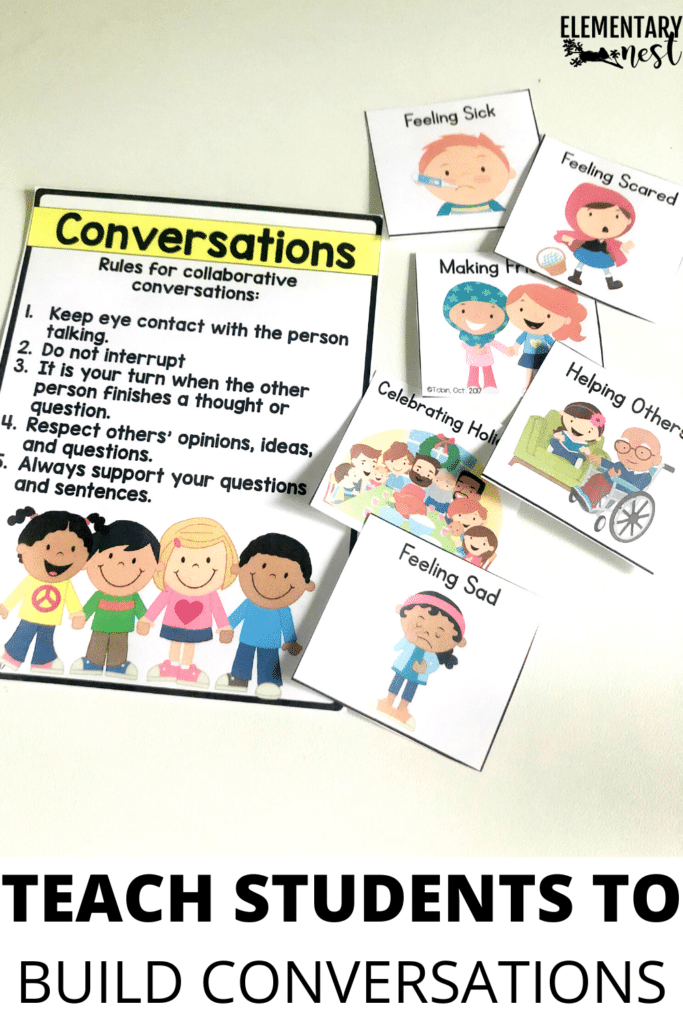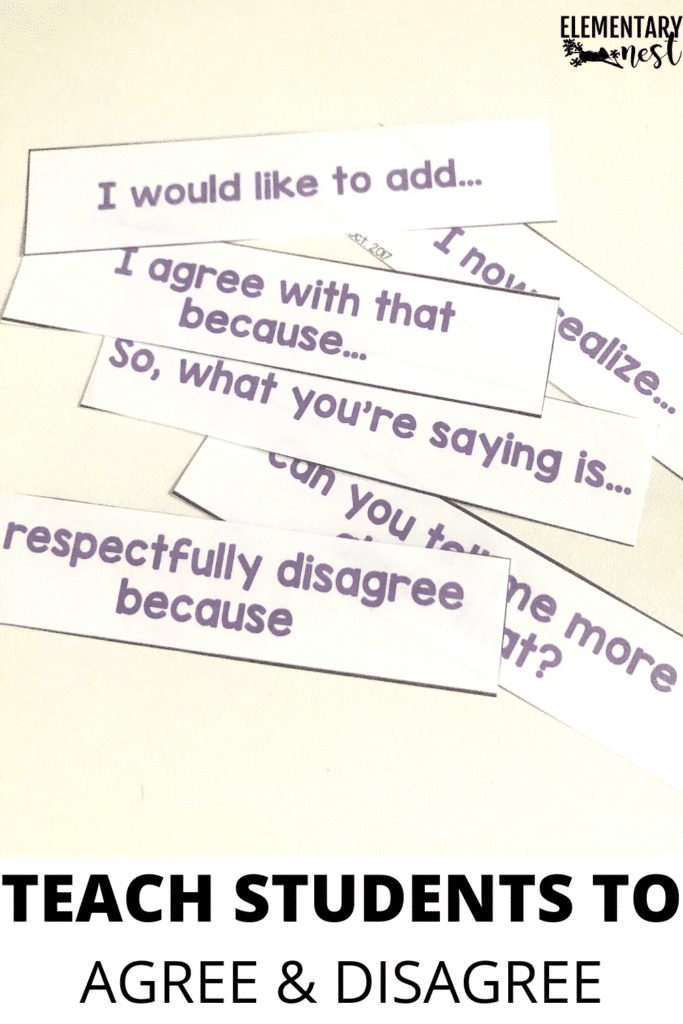
Today’s blog focuses on teaching students how to be respectful listeners and speakers. Speaking and listening skills are important life skills, but also address key common core ELA standards for speaking and listening. Read on for tips on how to explicitly teach speaking and listening skills and implement guided practice in your classroom. The resources shown in this blog post all align to the standards below.
Start With Simply Listening to You

To begin teaching listening skills, start by simply having the students listen to you as the teacher. They must be able to do this in order to learn from you, thus, learning these skills from your instruction. Using directed drawings is a very effective way to practice these listening skills. As you give step-by-step directions, the students must be focused on you, what you are saying, and should not be speaking at this time. This activity can be started in Kindergarten and used throughout the elementary grades.
Teach Them How to Build a Conversation

One of the first speaking and listening skills students must learn is how to build a conversation based on a given topic. The Conversations poster and topic cards shown in the resource above will help you teach students how to do this and practice with their peers. It is important to review the rules for holding a conversation, such as keeping eye contact, not interrupting, being respectful, etc. The topic cards will allow the students to practice having a collaborative conversation based on these rules. The teacher may observe these conversations and give feedback and guidance based on what they see and hear.
Teach Them How to Respectfully Agree and Disagree

Agreeing and disagreeing is a part of life. Therefore, teaching students how to do so respectfully is an important life skill. Help students learn how to stay in control, support their opinions, and voice their thoughts in a respectful manner. This resource gives students agree/disagree response stems to help them structure their ideas. This is a key skill as it allows the conversation to continue to flow. It also helps students learn how to ask questions to better understand the other person’s viewpoint.

A great way to help students practice agreeing and disagreeing is by using examples and non-examples. This resource gives students WEAK and GOOD responses. They must sort them into the appropriate category. This is an effective way to help students learn the difference between a weak and a good response, in turn, helping them form good responses to agreements and disagreements.
Let them Practice Speaking and Listening Roles

Another speaking and listening skill that must be taught is how to actually take on the roles of speaker and listener. These speaker, listener, and topic cards can be used to explicitly teach these roles and what their jobs are. Students will have a topic card and a role card. They will practice having a conversation about the topic by taking on the speaker and listener roles. These role cards will be passed as conversation continues.
Allow Daily Practice

A fun way for students to practice listening to each other and building conversations is through daily practice. Practicing these skills with interviews is fun for the kids and can be easily worked into the daily routine. The interviewer will ask a set of questions, allowing the interviewee to answer them. They will practice the speaking and listening roles as well as asking questions, clarifying answers, and building conversations.

Practicing speaking and listening skills can also be done with stories. Students will work together to create stories and come up with all of the parts of the story. Each student will have different character and setting cards. They must focus on listening to their partner’s story part in order to add to it to make a cohesive story. Students will have fun with this and will build on the stories together using their imagination and speaking and listening skills.
Some other ways to practice daily listening skills are:
- Playing games such as Simon Says or Telephone
- Using call-and-repeat sayings
- Class cheers
- Show-and-tell
- Read alouds
- Q&A sessions
Suggested Resources You May Like
Check out these full Speaking and Listening units for grades K-4. They come with lesson plans, posters, activities, and assessments. Please keep in mind that the 2nd grade and 3rd grade SL units are mostly the same activities and lessons, but with different words, phrases, pictures, and topics.
Links to your grade level:
- Kindergarten Speaking and Listening
- 1st Grade Speaking and Listening
- 2nd Grade Speaking and Listening
- 3rd Grade Speaking and Listening
- 4th Grade Speaking and Listening
Thanks so much for reading this blog post all about teaching your kiddos to listen to their classmates.
Here are even more tips and tricks for listening skills!
If you’re looking for more blog posts about ELA skills, check these out…






















